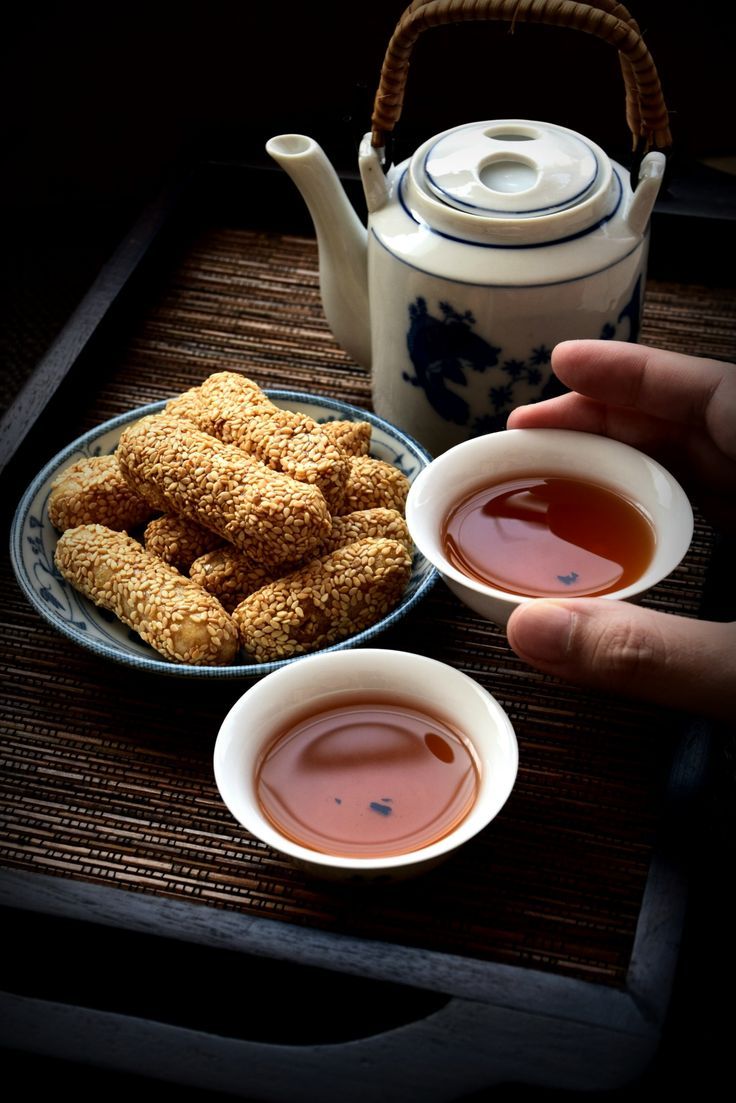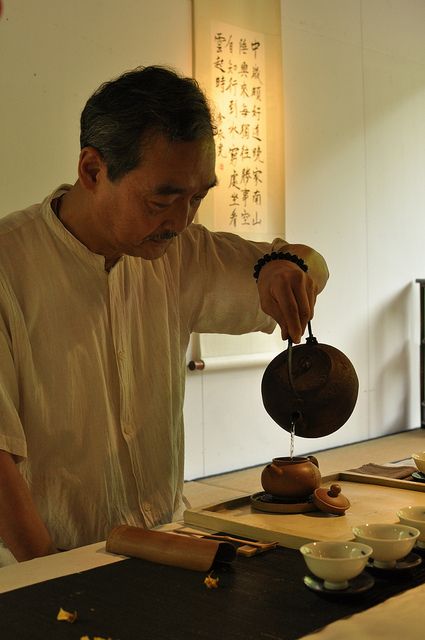China is the home of tea
Tea is also one of the most interesting and popular customs of the Chinese people. Nowadays, in many traditional tea villages in China, tea is closely integrated with science and technology and industry, and it has become a golden leaf for the revitalization of the countryside and the enrichment of the people.
Tea is also a globally renowned “China's business card”, from the ancient times through the Tea Horse Exchange spread far and wide, and now along the “Silk Road Economic Belt” “21st Century Maritime Silk Road” across the mountains and oceans, Chinese tea has become the world's most popular tea. Today, along the “Silk Road Economic Belt” and “21st Century Maritime Silk Road”, Chinese tea has become the beverage of the world. Drinking tea has been passed down for thousands of years .“The song of warblers and the dance of butterflies are long, and the red stove cooks tea with the fragrance of pine flowers. At the Guanhan Yaji Tea Room in Xi'an, Shaanxi Province, China, performers dressed in Tang costumes are recreating a Tang Dynasty court tea banquet for tea lovers. They first put the tea cakes in the tea mill and grind them into “fine rice” shape, and then boil the tea in one, two and three times, before distributing and drinking the tea.“Open, tolerant, self-confident and brilliant Tang Dynasty, tea from crops gradually entered into all areas of national politics, economy and culture, forming the unique Tang tea culture.” Wang Miao, the restorer of the tea feast, said. From 2010 to now, he has sought out the art of porcelain firing and the art of glaze making by visiting the locations of many traditional kilns such as Jingdezhen in Jiangxi Province and Tongchuan in Shaanxi Province. Together with a research team from the Famen Temple Museum in China, he successfully restored the Tang Dynasty Palace Tea Banquet. Wang Miao's inspiration for the restoration of the Tang Palace Tea Banquet came from the Famen Temple, about 120 kilometers away from Xi'an, which used to be a royal temple of the Tang Dynasty. In 1987, the underground palace of the Famen Temple unearthed the earliest and the highest-grade Tang Dynasty Palace Tea Ware that has been found in the world so far.
The Tang Dynasty palace tea set in Famen Temple is one of the important historical witnesses of Chinese tea culture. After the Anshi Rebellion of the Tang Dynasty, the royal family gradually tea rituals, tea instead of wine. Especially after the middle and late Tang dynasties, with the implementation of the tea policy and the popularity of the Tea Sutra, tea drinking became 'the Qing Shang of the Sheng Shi'.” Jiang Jie, a researcher at the Famen Temple Museum, said. Song Dynasty is the flourishing period of Chinese tea culture, the literati group has a professional tea-tasting society, the folk tea style, the neighborhood housewarming to “offer tea”, when you get married to “set tea” “tea”, “tea ”, have become folk customs. Through the Song, Ming and Qing dynasties, tea culture has been deeply integrated into traditional Chinese culture through literature, art, religion and other means, and has been flourishing. To this day, tea stores and tea rooms can be found everywhere in China's major cities; in daily life, “making a cup of tea for a guest” is still an important way of hospitality for Chinese people.
Southern Tea Tree, Fumin Gold Leaf
China is the origin of the tea tree. Lu Yu, the tea sage, wrote in “The Book of Tea” that tea is the best tree in the south. According to “Huayang Guozhi - Ba Zhi”, during the Western Zhou Dynasty, the state of Ba (present-day southern Shaanxi Province and Sichuan Province) had already paid tribute to the Zhou royal family for tea, which is the earliest record of “tea” in ancient literature.
In 1998, is located in xianyang city, shaanxi, China's han jing emperor tomb - hanyang mausoleum, no. 15 outside the hidden pit found unknown plant remains, after years of scientific research, these specimens are buried more than two thousand years of ancient tea! And almost all tea shoots, quality is quite high. This shows that in the early Western Han Dynasty more than 2,100 years ago, tea has appeared in the Chinese royal court. Western Han Dynasty capital Chang'an (now Xi'an City, Shaanxi Province) and Hanyang Mausoleum location of Xianyang, are not a place to produce tea. Some experts speculate that the tea unearthed at the Hanyang Tomb may have come from southern Shaanxi or its neighboring areas. “Between gold and silver color, mellow and sweet taste.” Now in Ankang City, southern Shaanxi Province, tea production staff is the Hanyang Mausoleum unearthed ancient tea as a specimen, to the local high-altitude selenium-rich tea leaves as raw materials, “Qin Han ancient tea” restoration and innovation. “We restore the ancient tea, not only cultural roots, but also the use of intangible assets of tea culture, so that people can get rich, the countryside can be revitalized.” Chen Zhenhua, head of the ancient tea manufacturing enterprise, said. Located in the Qinling Mountains, Bashan area of southern Shaanxi, was one of the deepest poverty in China. Because of the long history of tea planting, located in the region of high-quality selenium-rich soil, many tea farmers from Ankang City, southern Shaanxi, in recent years, relying on the development of selenium-rich tea, embarked on the road to poverty alleviation and prosperity. In the selenium-rich tea plantation in Ankang City, Liu Shui Town, more than sixty-year-old Fang Lizong is busy picking tea. “Tea picking is also a technical job, talking about the doorway and method.” Fang Lizong said, “Only one bud and one leaf, one bud and two leaves of the fresh leaves, can be sold at a good price. If I am quick, I can earn more than 100 yuan a day.”
At present, the tea industry in Ankang City, more than 190,000 people, tea plantation area of 1,096,000 acres, annual production of 47,200 tons of tea, the comprehensive output value exceeded 28 billion. In another well-known tea township in southern Shaanxi, Xixiang County, Hanzhou City, the tea industry has been the key industry of rural revitalization, more than 70,000 tea farmers in the county, 260,000 tea industry practitioners in all seasons have work, monthly income.
China's Tea Style Spreads Far and Wide
For more than two thousand years since the Western Han Dynasty, tea has been one of China's most influential business cards overseas.
According to Suleiman's “Anecdotes of China and India”, more than 120,000 foreigners were engaged in trading activities in Guangzhou at the end of the Tang Dynasty. They came to China via the Silk Road in exchange for tea, porcelain, and silk fabrics from the Tang Dynasty. In today's Jingyang County, Shaanxi Province, lies China's only museum focusing on the culture of Fu Tea. Here, visitors can experience the ancient craftsmanship of the “Silk Road Famous Tea”: sorting the original tea, boiling the juice and pouring the glaze, stir-frying the tea in open pots, stacking the flowers. “For more than 600 years before the founding of New China, Jingyang was the main processing place for Porcha and monopolized the border tea market for a long time.” Xu Xiaobing, deputy director of the Fu Tea Museum, said, “Jingyang Fu Tea was welcomed by the people in the border, plateau and pastoral areas due to its unique efficacy of eliminating food and greasiness, dispersing toxins and removing dampness, and had been exported to more than 40 countries in Central Asia, West Asia, Europe, etc. It was the main commodity on the Silk Road, and was regarded as the ‘Black Gold in Tea’ .“Through the first Tea fermentation process control technology, we have expanded the basic process of traditional Por Tea, which is made from black hair tea, to six major tea families, including red, green, white, black, green and yellow.” Liu Xiang, the head of a biotechnology company in Jingyang County, told reporters, “At present, our products are mainly exported to Singapore, Malaysia, India and other overseas countries along the ‘Maritime Silk Road’.”
Today, Chinese tea has spread all over the world, and coffee, cocoa and are known as the world's three major non-alcoholic beverages.



